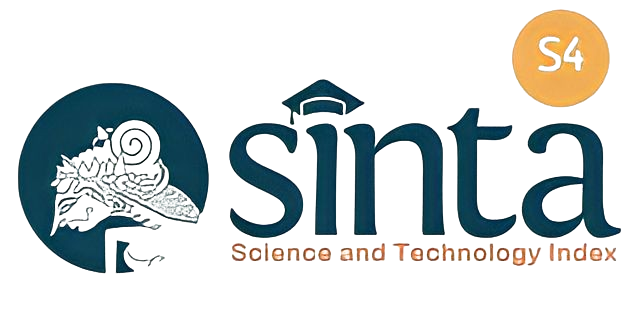Optimalisasi Wakaf Tanah Perspektif Istibdal (Studi pada Harta Wakaf Pimpinan Daerah Muhammadiyah Kota Yogyakarta)
DOI:
https://doi.org/10.14421/jmes.2022.011-06Keywords:
Istibdal, Optimization, PDM Yogyakarta City, Waqf and land waqfAbstract
This study aims to analyze the optimization of waqf land in the perspective of istibdal carried out by the Muhammadiyah Regional Leadership of Yogyakarta City. The type of research used is descriptive qualitative research with interviews and literature study. The analytical method used is istihsan analysis by looking for benefits in the istibdal process of waqf property. Based on the results of the analysis carried out, it was found that istibdal waqf property is one way so that the benefits of waqf can continue to be felt on waqf assets that are no longer productive or cannot be used anymore. Istibdal waqf is needed as an effort so that the waqf property is still able to provide benefits as aspired by the wakif. There are four (4) types of istibdal waqf that have been used in exchanging waqf property, namely: Istibdal Nazhir, Istibdal Benefits, Istibdal Place and Istibdal Status. Istibdal land waqf carried out by PDM Yogyakarta City is able to optimize waqf land well. This is evident from the utilization of waqf land which has not been able to be maximized due to various obstacles then istibdal land waqf is carried out which is significantly able to make the waqf property optimal and productive again.
Downloads
 Abstract viewed: 436 times
|
Abstract viewed: 436 times
|
 PDF downloaded = 803 times
PDF downloaded = 803 times
References
Abdoeh, N. M. (2019). Tinjauan maqashid syari’ah terhadap pandangan ulama mengenai ruislagh. Ulul Albab: Jurnal Studi Dan Penelitian Hukum Islam, 3(1), 67. https://doi.org/10.30659/jua.v3i1.7345
Badan Wakaf Indonesia. (2015). Fikih Ruislagh. Badan Wakaf Indonesia.
Binti Ibrahim, A., & Binti Ibrahim, A. (2018). Pelaksanaan istibdal dan pembangunan tanah wakaf di perak. Asian People Journal (APJ), 1(2), 287–297. www.journals.unisza.edu.my/apj/www.journal.unisza.edu.my/apj/
Furqon, A. (2017). Penukaran tanah wakaf masjid agung Semarang dalam perspektif fikih istibdal. Ijtihad : Jurnal Wacana Hukum Islam Dan Kemanusiaan, 17(1), 39. https://doi.org/10.18326/ijtihad.v17i1.39-60
Hasan, T. (2009). Istibdal harta benda wakaf. Al-Awqaf, 2(3), 1–16.
Hasanah, N. (2018). Kontekstualitas ayat-ayat hukum wakaf di Indonesia. Asy-Syari’ah, 20(2), 133–144. https://doi.org/10.15575/as.v20i2.3446
Ibrahim, M. A. (2009). Istibdal tanah wakaf. Al-Awqaf, 2(3), 17–24.
Ibrahim, S., & Subhan. (2009). Praktik istibdal harta benda wakaf di Indonesia. Al-Awqaf, 2(3), 25–43.
Ilyas, M. (2016). Istibdal harta benda wakaf perspektif hukum Islam. Jurisprudentie : Jurusan Ilmu Hukum Fakultas Syariah Dan Hukum, 3(2), 138–150. http://103.55.216.56/index.php/Jurisprudentie/article/view/2822
Kementerian Agama. (2021). Data tanah wakaf. http://siwak.kemenag.go.id/
Khoirudin, A. (2015). Teologi al-’Ashr. Suara Muhammadiyah.
Noor, A. M., Ismail, C. Z., & Bakar, M. A. (2017). Fact and implementation analysis of istibdal method on waqf land in the state of penang. 1(November), 1–9.
Pimpinan Pusat Muhammadiyah. (2011). Himpunan putusan tarjih. Suara Muhammadiyah.
Rosadi, A. (2019). Zakat dan wakaf: konsepsi, regulasi, dan implementasi. Simbiosa Rekatama Media.
Sabri, H., & Mahamood, S. M. (2019). The factors influences toward istibdal implimentation for waqf development: the way forward. 16(2), 28–36.
Sari Pertiwi, R., Nafik Hadi Ryandono, M., Rofiah, K., & . A. (2019). Regulations and management of waqf institutions in indonesia and singapore: A Comparative Study. KnE Social Sciences, 3(13), 766. https://doi.org/10.18502/kss.v3i13.4246
Shidiq, S. (2014). Ushul Fiqh. Kencana.
Syakroni, M. (2017). Metode mashlahah mursalah dan istishlah (studi tentang penetapan hukum ekonomi Islam). Al-Intaj, 3(1), 187–201.
Utama, B. S. (2009). Optimalisasi manfaat wakaf dengan istibdal. Al-Awqaf, 2(3), 60–71.
Utsman, H. (2009). Istibdal nazhir wakaf menurut fiqh. Al-Awqaf, 2(3), 44–50.
Waluya, A. H. (2018). Istibdal wakaf dalam pandangan fukaha klasik dan kontenporer. Misykat Al-Anwar, 29(2), 49–66.
Yusuf, M. Z., & Satibi, I. (2022). Pendataan aset wakaf muhammadiyah: Tinjauan akuntansi syariah. El Muhasaba Jurnal Akuntansi, 13(1), 61–70. https://doi.org/10.18860/em.v13i1.14094











